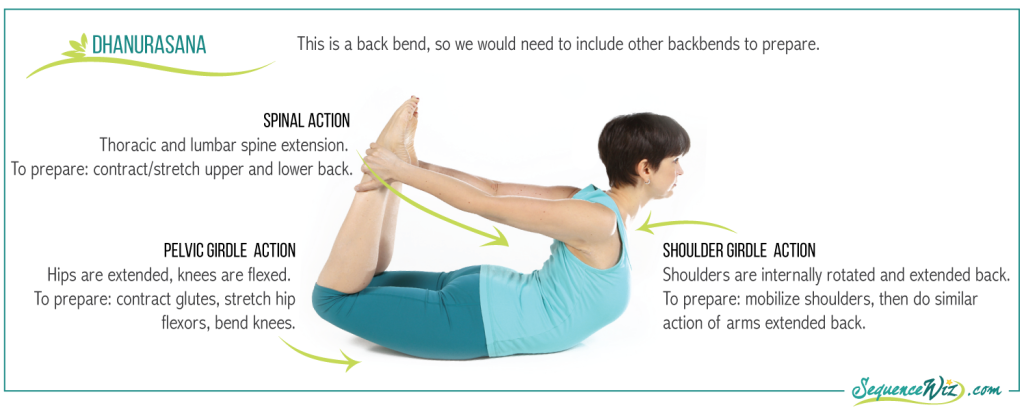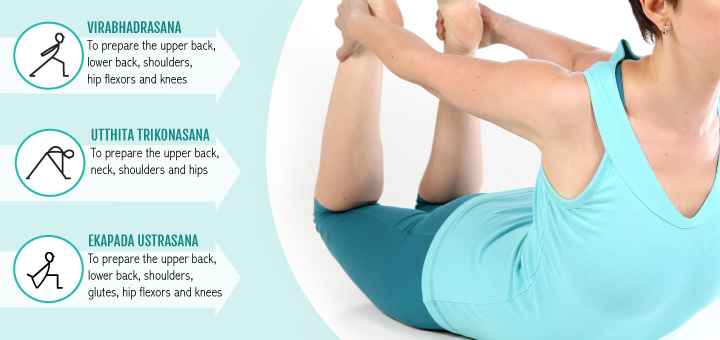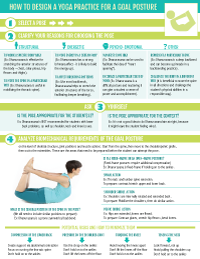At the risk of sounding like a broken record, I will say it again – achieving the deepest form of the posture is NOT a goal in yoga. And even though we do need to challenge ourselves physically and otherwise to facilitate growth, we need to do so responsibly.
Many teachers seem to believe that the risks of a back bend are minimized if the body is positioned properly in the posture. This is certainly true, but this is not enough. Some other points that are essential in making the back bends safer include:
- Building gradual progression of intensity (both in the space of one class and long-term)
- Limiting the number of back bends within one practice
- Using stabilizing postures
- Including adequate compensation
1. Gradual progression means building the intensity gradually toward the peak, where the following posture is a bit more challenging then the one before it. If you have a certain pose in mind that you would like to work toward, you would need to analyze the pose first on the level of skeletal structure, joint positions and muscle actions to see which parts of the body require preparation. We usually start from the spine, then move to the shoulder/pelvic girdle, then out to the extremities. For example:
 Then we can select some Core poses that would help us get there, for example:
Then we can select some Core poses that would help us get there, for example:

Notice how the choice of the arm positions imitates the arm position in the goal posture – this is also part of the preparation process. Of course, we wouldn’t do those poses back-to-back; we would need to compensate for them in the course of the practice.
2. Limiting the number of back bends. I’ve been to yoga classes where the teacher seemed to include every back bend possible. More is not better. For people who are already extra-bendy too many back bends will only destabilize the structure, making it more vulnerable. For those people who do not have a lot of spinal flexibility it will be too much, since their bodies are not used to this sort of movement – that’s an injury waiting to happen. Generally, I wouldn’t recommend doing more then 4-5 back bends within a practice.
3. Stabilizing postures take care of the lower back and sacrum. This is such an important role that back bends play, yet it frequently goes overlooked. When we do all those fancy standing postures – back bends, side bends, twists – we pull the spine and sacrum in every direction while keeping the pelvis relatively stable. The potential of torquing or destabilizing the SI joins is high. So afterwards we need to stabilize the relationship between the sacrum and pelvis by doing some sort of symmetrical prone back bends; Vimanasana works great, as well as certain variations of Bhujangasana.

4. Adequate compensation is essential in bringing the body back to the state of balance. We don’t bend back very often in our daily lives, so for many people this is a foreign and intense movement that needs to be neutralized. Often several poses are necessary to compensate for a deep back bend. In the example of Dhanurasana we might need couple of forward bends to stretch the back, an axial extension posture to mobilize the hips and shoulders, and a twist to realign the shoulder and pelvic girdles.

Back bends play two very different distinctive roles in any yoga sequence: some increase the range of motion of the spine and others stabilize the lower back and sacrum. That’s why it matters how we distribute them throughout the yoga practice. To see those ideas in action, check out this step-by-step process of building a sequence for Dhanurasana.

http://sequencewiz.org/2015/05/20/how-to-organize-back-bends-in-a-yoga-sequence/
Δεν υπάρχουν σχόλια:
Δημοσίευση σχολίου